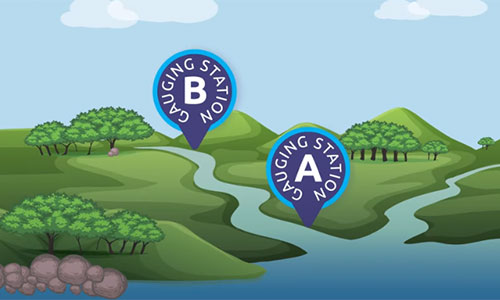Surface water – wet season flows policy announced
The Surface Water – Wet Seasons Flow Policy was announced by the Minister for Environment, Climate Change and Water Security, Kate Worden on Thursday 15 February, and introduced a precautionary approach to extracting surface water from the 30 river basins in the Top End.
The limit to how much water can be taken during the wet season has been reduced based on modelled data from the last 50 years. Before the introduction of the new policy, the volume of surface water that could be taken for commercial use was 20% of a river’s flow, and it could be taken all year round. This was part of a long standing policy in the Northern Territory (NT).
Now, that’s been changed and the new policy will better protect the NT’s free flowing rivers that provide valuable habitat for flora and fauna, as well as the setting for much-loved pastimes like boating and fishing.
The new policy reduces the volume of water that can be taken from 20% all year round, to 5% of the 25th percentile of 50 years of modelled data during the wettest 3 months. The 5% setting is based on using 50 years of records to identify historic poorer wet seasons (the 25th percentile) to ensure the estimated water availability is even more conservative, sustains flows in drier years to account for climate variability. In reality, this limits surface water extraction to about 3% of annual wet season flows, possibly as little as 1% in wetter years.
This is a precautionary approach and will protect biodiversity and river systems across the NT as it has been established before large scale development is introduced into the NT. By learning from other jurisdictions, having this conservative approach in place before any significant wet season extraction has been licensed in the NT will ensure there isn’t a repeat of the Murray-Darling Basin situation.
Each surface water licence application is assessed on its merits and the new policy is one of 11 factors that the Controller of Water Resources must consider when making a licensing decision. The Controller must also consider the impact of interference with a waterway and other environmental regulatory requirements that may apply such as land clearing application, environmental impact assessment, and constrained activities within environmental protection areas.
Engagement with the community and key stakeholders has been considered during the development of the policy, and the draft version was published in November 2022 for public consultation.
Read more about the policy, go to the Northern Territory Government website.
The video explains how the 25th percentile is determined to ensure that only 5% of total flows are extracted and shared.
This article was initially published in our monthly newsletter, Finding the Balance. Subscribe to get future updates delivered to your inbox.

